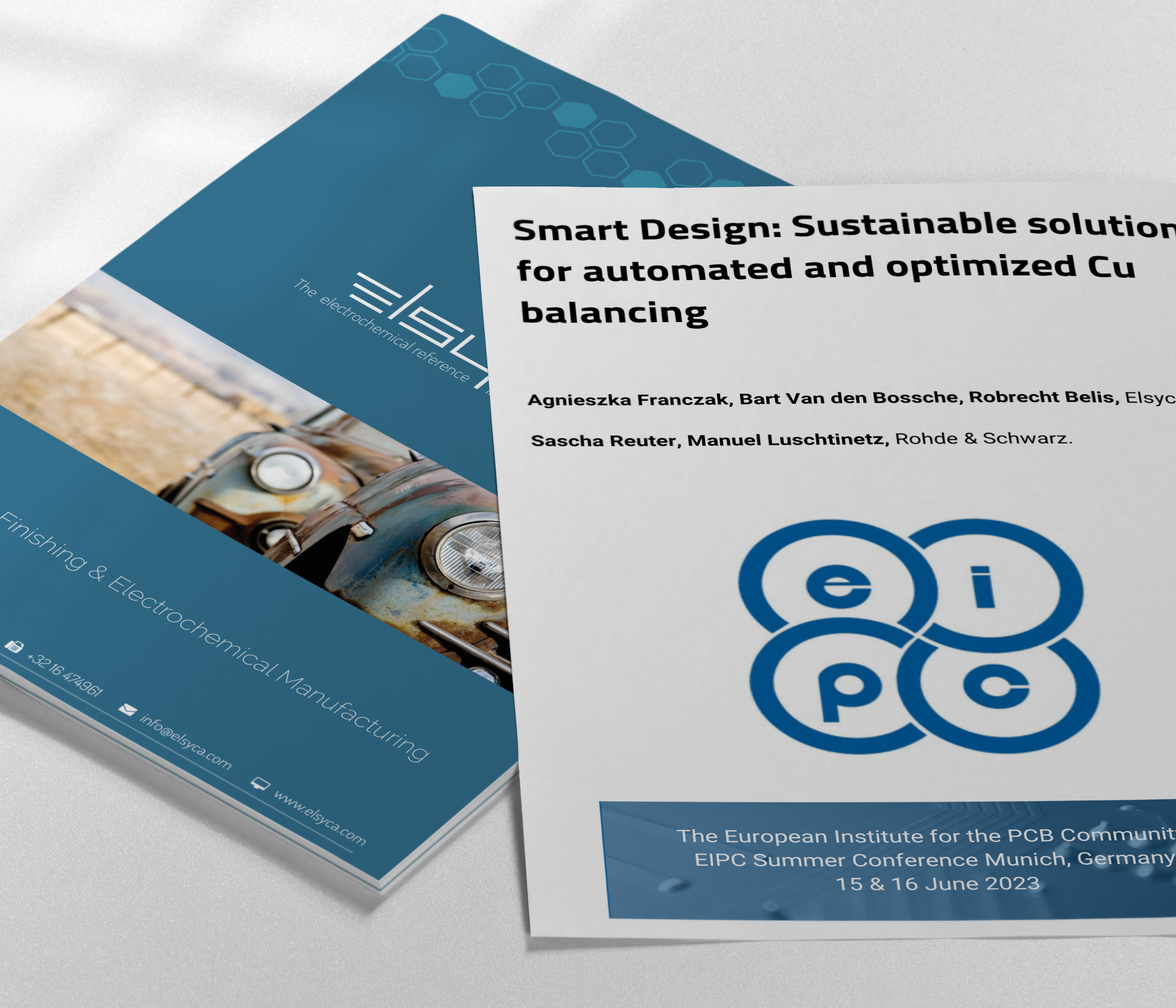
Smart Design: Sustainable solution for automated and optimized Cu balancing
EIPC 2023 - Conference Paper

Smart Design: Sustainable solution for automated and optimized Cu balancing
Agnieszka Franczak, Bart Van den Bossche, Robrecht Belis, Elsyca NV.; Sascha Reuter, Manuel Luschtinetz, Rohde & Schwarz.
Abstract
PCB manufacturing relies on building a physical PCB from its design, accounting for a set of required specifications. Understanding the design specs is crucial as it has a direct impact on the PCB’s fabrication process, performance and productivity yield rate. One of such specs of interest is copper balancing - copper traces distribution in every layer of the PCB stack-up which provides exceptional electrical and thermal characteristics necessary for signal transmission and heat dissipation. In case the copper distribution is uneven, the mechanical misalignments such as board twists, bow or warpage can occur. Thus, one of the tasks a PCB designer has to perform is to balance the copper traces distribution, so that the mechanical properties can be improved. An optimized copper balance also ensures homogenous copper plating across each PCB layer, creating uniform copper layer thickness on the plates surfaces. This in turn, improves signal transmission and overall PCB performance, provides consistent PCB thickness during lamination and reduces the risk of low-pressure surface areas that may result in re-design. With the recent computer simulation technology development, PCB designers can now perform fully automated and optimized copper balancing activities, making sure their designs are free of re-design risks and fabricated towards required Cu distribution and thickness specs. Furthermore, the Cu balancing tool can be integrated within their design business logic, what creates a desired one button solution.
This talk will highlight the issues caused by poor Cu balancing at the design stage, the most optimal mitigation strategy to address the issues occurred and the workflow of the integration process, which creates a smart design approach.
